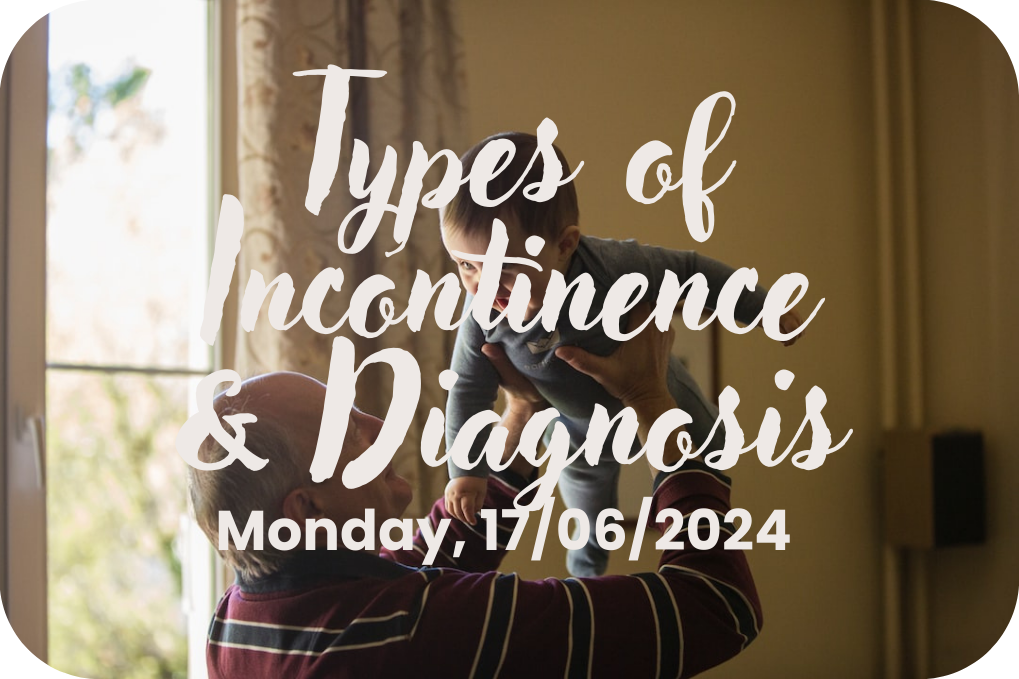Types of Incontinence & Diagnosis

This article was part of our series for World Continence Week 2024.
Incontinence as a condition affects millions of people around the globe. However, the stigma of incontinence means that it is not often talked about. But, as the saying goes, knowing is half the battle. So in this article, we will go through three topics: what is urinary incontinence, what is faecal incontinence, and what does incontinence mean for you individually or as a carer.
Urinary Incontinence
Having UI means involuntarily losing urine from the bladder (aka you wee when you don’t mean to). This usually mean that something is wrong either with your bladder, your pelvic floor muscles, or the nerves controlling the urge to urinate. A healthy bladder can generally do the following:
- Hold up to 400-600ml of urine before needing to empty.
- Empty 4-8 times every day (around every 3-4 hours).
- Wake you up once at night or twice for people aged over 65.
- Indicate when it is time to empty with enough time to find a toilet.
- Empty completely every time.
- Not leak urine.
When any of these functions do not work as intending, UI can manifest in one of six forms:
Stress UI comes from increased pressure on the bladder forcing urine out, due to weakness in either the urethral sphincter or the pelvic floor muscles. This commonly happens when coughing, sneezing, laughing, or doing impact exercise. This form of UI is common in women, especially if they are pregnant or active in sports.
Urge UI is commonly known as an overactive bladder. The reason for this are usually damaged nerves that make you feel like your bladder is fuller than it actually is. This then leads to forced emptying with little warning or control.
Overflow UI is common in the elderly. It usually happens when the bladder does not empty complete when going to the toilet. This means there is residual urine left, the bladder fills faster (and more completely) than anticipated, and you suddenly & quickly have to go to the toilet. If you also feel a sensation of your bladder still being full even after going to the toilet, that can be an indicator for Overflow UI.
Mixed UI, as the name implies, means stress and urge UI occurring together.
Functional UI is tricky and often overlooked, because in this case nothing is wrong with the body, but with the environment. An example of functional UI would be a person with dementia not remembering where the toilet is: Their body is fine, but another circumstance leaves them incontinent. This means that incontinence can be caused by external factors, and can potentially be fixed just by changing the circumstances.
Transient UI is incontinence lasting only for a limited period of time (usually less than six months). The causes for transient UI are generally reversible and can for example be caused by being unable to move while recovering from surgery, having had a stroke, or suffering from a urinary tract infection.
Faecal Incontinence
FI is more common than most people realise, as it is heavily affected by any gastrointestinal issues such as diarrhoea or constipation. Similarly to the bladder, a healthy bowel should do the following:
- Empty within a minute of sitting down on the toilet.
- Defecate easily and without pain.
- Empty completely.
- Indicate when it is time to empty with enough time to find a toilet.
FI can occur in one of three forms when any of these functions do not work:
Urge FI means a need to go to the toilet but loss of control before reaching it, with the reasons similar to Urge UI.
Passive FI occurs when you pass stool, mucus, or flatus (wind) without knowledge or noticing.
Faecal Seepage mean that while you are otherwise continent, there is occasional leakage of stool.
What Does This Mean For You?
As you can see, incontinence is not the same in every case. This means that correctly diagnosing the type of incontinence – and its causes – is important.
If you or a loved one is newly suffering from incontinence, try to rule out any outside factors: Sometimes, the solution can be as simple as helping (or asking for help) when going to the toilet, or making sure that the way to the bathroom is unobstructed. Nevertheless, the first point of contact when incontinence issues arise should be the GP, who can offer therapy or treatment options and refer to the relevant specialists. There is also the National Continence Helpline, where you can receive free and confidential advice.
In the meantime, continence aids can help with day-to-day continence management. If you want to know more on that end, you can look at our article on determining which continence aid is right for you and try them yourself by requesting samples.